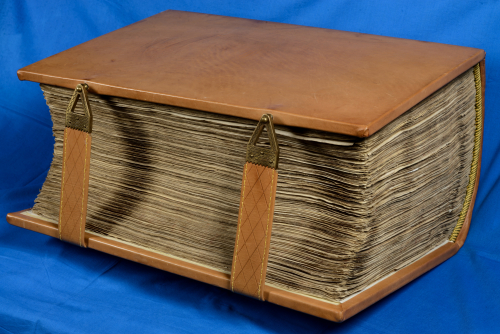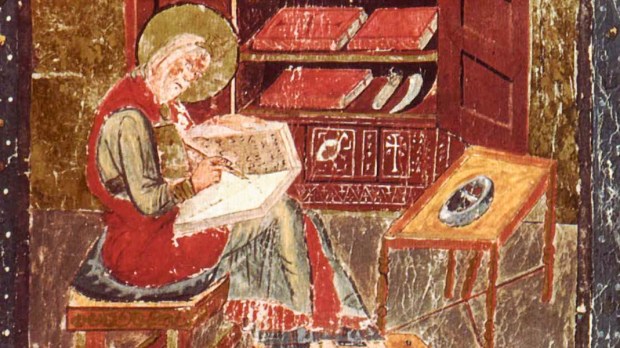The oldest surviving complete Latin Bible is set to go on display at the British Library’s Anglo-Saxon Kingdoms exhibition (October 19, 2018–February 19, 2019). The Codex Amiatinus is making its first homecoming since it was transported from England and delivered to Rome as a gift for the pope 1,300 years ago.

The history of this large tome can be traced thanks to two texts: The Life of Ceolfrith, by an anonymous author, and The History of the Abbots of Wearmouth and Jarrow, which was written by the Venerable Bede.
According to Bede, Ceolfrith was a “man who worked hard at everything.” As abbot of the monasteries Jarrow and Wearmouth, he doubled the size of their libraries. He also ordered the creation of three giant Bibles; one to be housed in each of the two monasteries and one to be gifted to the pope.
The British Library explains on their blog that both Bede and the anonymous author agree that Ceolfrith decided to make the pilgrimage himself, “because he was becoming too old to set a good example for his pupils.” They say he gave the monks 2 days notice before setting out, but this seems inaccurate, as the journey would have taken more preparation.
Using the two works about the old monk, they were able to make this video showing Ceolfrith’s part of the journey.
The video does not end in Rome, because Ceolfrith never made it to the end of his journey. The British Library describes the old monk’s final days:
Sometime between 4 June and 4 July, the Anonymous Life claims that Ceolfrith was in “Ælberht’s monastery, at a place called Horn Vale.” Scholars have suggested that this place was Kirkdale, in Yorkshire. Ceolfrith then boarded a boat for the Continent at the mouth of the River Humber on 4 July. It was not smooth sailing: the boat was apparently blown off course three times. Nevertheless, on 12 August Ceolfrith “reached the lands of Gaul” (Galliae terras), where he was received with honor by King Chilperic himself. The party then traveled over land: Bede claims Ceolfrith went part of the way on horseback and part of the way being carried on a litter, as he was becoming ill. Ceolfrith reached Langres around 9am on 25 September. He died there on 29 September 716.
The Codex’s journey did not end with Ceolfrith, however; a group of monks carried it to its destination, and delivered it to the pope. The Anonymous Life also preserves the pope’s thank-you letter to the monks of Wearmouth-Jarrow and mentions a fine gift he had received, which was probably Codex Amiatinus.
Centuries later, the codex was moved to the abbey of San Salvatore in Amiata, Tuscany. There, Peter the Lombard (fl. late 9th century) partially scratched out the inscription recording it as a gift from Ceolfrith to the pope and wrote his own name in place, gifting it to the monastery at Amiata. Scholars have been able to identify this book, however, thanks to a copy of its original dedicatory page having been preserved in the Anonymous Life.
The Codex Amiatinus will be on display at The British Library’s Anglo-Saxon Kingdoms exhibition from October 19, 2018–February 19, 2019. To book your tickets, visit their website here.

